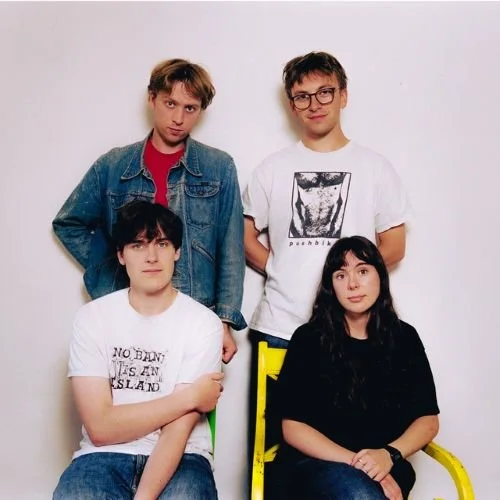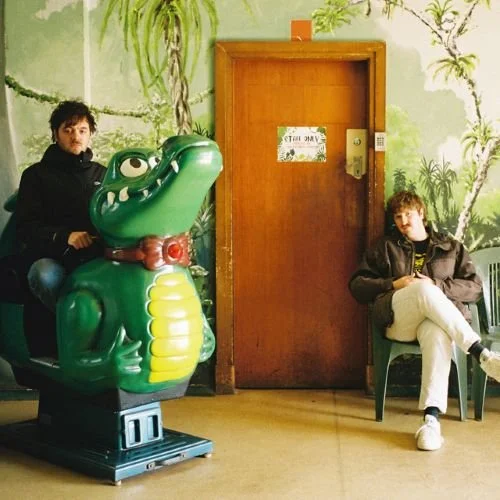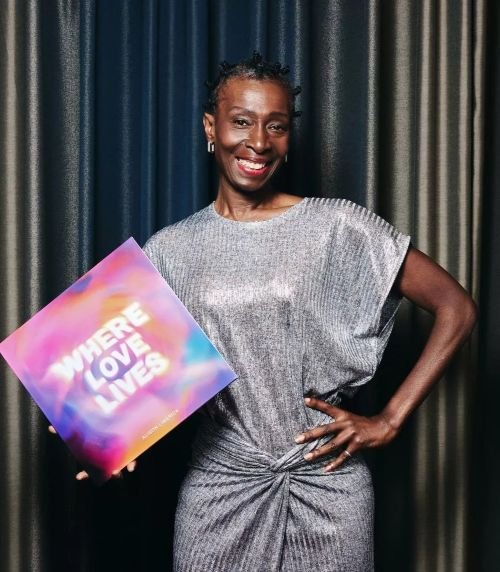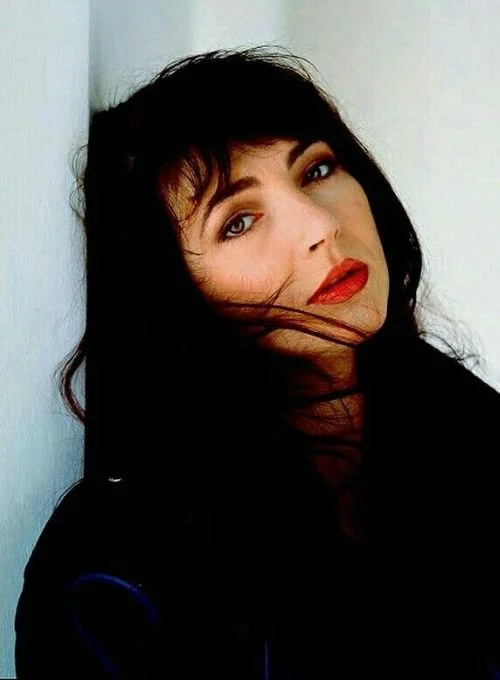FEATURE:
Spotlight
Westside Cowboy
__________
THIS wonderful…
Manchester band formed in 2023 and, since then, have seen their music reach a wide and adoring fanbase. Reuben Haycocks, James Bradbury, Aoife Anson O'Connell and Paddy Murphy are Westside Cowboy. I think each year sees a lot of solo artists highlighted for greatness. I guess the majority of the best or best-reviewed albums are from them. However, the band market right now is really fertile and productive! Especially in the U.K. and Ireland. Many more great examples than here than in the U.S. even. Westside Cowboy release their sophomore E.P., So Much Country ‘Till We Get There, on 16th January. The band have some U.K. dates ahead, but they also have a couple of gigs in the U.S. I love how the band have a date in New York and one In L.A. Five days apart, it seems like a long way to go for two gigs! However, it is amazing that Westside Cowboy have demand there and, after these gigs, there will be more demand and opportunities next year. Back in June, The Line of Best Fit spoke with the Manchester quartet. Everyone needs to hear their music, as we are going to be talking about them for a very long time to come:
“Before coming together as Westside Cowboy, Haycocks, Murphy, O’Connell, and Bradbury were orbiting one another in various groups – with The University Of Manchester acting as the barycentre. Haycocks, Murphy, and O’Connell met during freshers week and quickly hit it off. Within two days, Haycocks and Murphy started a band called DieKaiDai. “It was very different, it was noisy. We tried to make it poppy, but ultimately it sounded very confused and very young,” Haycocks tells me. “We made all the mistakes that were possible to make being in a small band.”
Meanwhile, Murphy and Bradbury were in a band called Katz, which Bradbury describes as “a three-piece surf-punk band that played so fast it ceased to exist.” Mid-sentence, the band’s attention diverts to a car driving past. They fill me in on their observation, explaining that someone had gone the wrong way down the one-way system, which feels oddly symbolic of the difficulty that they ran into with their earlier projects. “We got sick of those bands,” Murphy says. “We were sick of slamming our heads against the wall and feeling like things weren’t natural to do.”
When walking the dichotomous line of surf-punk and noise-rock-pop started to feel like a dead end, it was an encounter in Johnny Roadhouse – the renowned music shop where Bradbury worked at the time – that led them to change course. The conversation was simple.
“James was like, ‘Do you want to start a band called Westside Cowboy?’” Murphy recounts. “And we were like, ‘Yeah.’” O’Connell – a cellist who had never picked up a guitar – joined on bass and took to it naturally. With Haycocks on vocals and guitar, Murphy on drums, and Bradbury on guitar, they ditched experimental music and stripped the music back to its simplest form. “We just wanted to play a fucking song again,” Murphy says, referring to the less complicated structure of traditional pop music that they grew up with.
For the most part, tradition exists as the foundation for Westside Cowboy. However, this is not to suggest that their sound is dated. The word that they use to describe it is “Britainicana.” It’s their own coinage to describe American roots music reinterpreted through a very English lens, and it’s not static. The band tells me what represents “Britainicana”: The La’s, Johnny Roadhouse, Violent Femmes, Chappell Roan, and Back to the Future. It feels limitless. “We grew up smothered by American media – films, TV, all of it,” Murphy explains. “Like with everything, when you’re a kid, you seek to emulate it. But you live in rural north-west England. You’re not on the Sunset Strip, or Manhattan,” he continues, earning chuckles in agreement.
Rather than reject those borrowed influences, they transmute them by reimagining Americana through the British DIY tradition that they know while embracing the contradiction that comes with it”.
Creators of an intriguing sound and music that is deigned for everyone, Westside Cowboys are proving that bands, those who produce this amazing utilitarian and hard-to-ignore music, are so vital. They offer something that solo acts cannot. In April, DORK spotlighted a band who were self-proclaimed “Britainicana pioneers”. I do think that next year is going to be a massive one for them. After a string of gigs in some really cool venues, they will pick up these new skills. That experience on stage is not new to them. However, the more they play, the more we will talk about them. It means they will catch the eyes of festival organisers. Expect to see them bossing it next summer:
“The band’s approach to songwriting reveals a sophisticated understanding of pop’s emotional power. As Haycocks explains, “I think there are always themes that songwriters are drawn to, and I think that they are generally similar across most styles of writing. I am drawn to the idea of a love song as a way of hyperbolising your experience. Unfortunately, we don’t all live in our favourite songs, but a good love song is close enough to our own experience to connect to us on an emotional level but lofty enough to give us an escape and seemingly lift us out of our own unremarkable experiences.”
This philosophy – finding the extraordinary within the ordinary – permeates everything Westside Cowboy do. The response is refreshingly unpretentious when asked about the message they want listeners to take away from their music: “Not too sure, we haven’t really thought about it before. At the end of the day, we’re just four mates who love to play music, pop music. more than anything else. I guess it would be, ‘Don’t think, just enjoy it’. It’s music for everyone, we hope.”
The band’s trajectory continues to accelerate. They’re currently finishing their first EP, scheduled for release in the summer, and their live calendar is filling up with a number of events. “We have some really cool festival slots coming up that we’re excited for: Green Man, End of the Road… we’re incredibly lucky and feel very grateful for all of it.”
Their ambitions, while substantial, remain grounded in authenticity and community. “We make a bucket list every year,” they share. “The one last year we said that we wanted to play the Ritz (we’d played two gigs at cafes at the time), and it somehow happened!” But beyond the venue wish list, their goals reflect a deeper purpose: “I suppose our main goal at the moment is just to have our music connect with as many people as it can. Whilst we’re doing this, though, we’d also like to be able to lift up the people and causes we love, too. Getting to do this is such an insane luxury that we want to use our music as a vehicle for giving as much as we possibly can.”
This commitment to community extends to their festival appearances, where they’re as excited to watch other acts as they are to perform. They enthusiastically name-check fellow Manchester band Holly Head, who they’re keen to see when they play Dot To Dot, describing them as having “the best grooves and live show going. A generational rhythm section on show there.” Their festival experience varies – while Reuben has been attending Green Man “every year since like 2013 or something stupid”, guitarist Jimmy has never attended a festival before. “I guess he’ll be having a trial by fire,” the band quip.
As our conversation winds down, they share two pieces of information – one whimsical, one significant. “Babies are born without kneecaps,” they insist, before adding, “We’re also in the final for Glasto emerging talent” – which they’ve since won, ‘FYI’ – “that’s maybe just exciting for us, though.” Their final message combines both playful persistence and social consciousness: “We’re not joking. Babies are seriously born without kneecaps. Donate to Medical Aid For Palestinians if you can!”.
NME spoke to Westside Cowboy ahead of their appearance at Glastonbury this summer on the Woodsies stage. They won the Emerging Talent Competition. I may be a bit late to them. Getting huge focus earlier in the year, I think they will make their way back onto the radar. One of those bands who will be dubbed the ‘Sound of 2026’. Or those to watch. As they put out the So Much Country ‘Till We Get There E.P. in January, there will be new interviews and focus:
“There’s a lot of different American influences in the sound of the band…
Bradbury: “Yeah. Hank Williams and Bob Dylan were important early on.”
Murphy: “Reuben and I were coming out of a band that was way more experimental and noisy, and we’d kind of burnt ourselves out with that – we wanted to reconnect with more traditional styles of music. Reuben was raised on folk music, and Jimmy’s a massive Elvis nut, really into his early rock’n’roll.
“So, it just felt easy compared to what we’d been doing previously, where everything was overcomplicated and maybe even a little bit pretentious. It seemed like way more fun to just have a laugh playing skiffle covers or country songs, really simple and timeless stuff with just three or four chords.”
You’ve described your sound as ‘Britainicana’. Was there a blueprint for that style?
Anson-O’Connell: “I think there’s many different blueprints for Britainicana. We’ve just given a very old thing a new name. Folk is in the mix, too; we have some amazing friends in a Manchester folk band called Brown Wimpenny, and although they make such different music to us, they are Westside Cowboy in ethos. Or maybe we’re Brown Wimpenny in ethos.
“We all grew up with folk music and religious music, and the first song I ever wrote was inspired by a Lankum gig. I think not being able to play the guitar very well lends itself to writing in that style, actually.”
How important has Manchester been for you as a base? What’s it like to be a young band starting out here now?
Bradbury: “COVID felt like a bit of a reset for Manchester. It seems much easier to get people out to shows now than it used to be.”
Anson-O’Connell: “At the minute, I don’t know if there’s anywhere more exciting for music. We’ve had a few conversations about that with friends recently; just talking about how lucky we feel to be here.”
Murphy: “It’s nice how small and tight-knit the community feels. You’re bumping into friends who are in bands on the street all the time. And everything feels new. There’s great bands coming up, like Martial Arts, Shaking Hand, Dove Ellis and Holly Head, and none of them sound like Joy Division. None of them sound like Oasis or The Smiths”.
Such a tremendous young band with this sound that sticks in your heart and head, I am excited by what their new E.P. has to offer. They released the This Better Be Something Great E.P. in August, it is a pretty quick follow-up! You wonder if an album will arrive next year. Until then, go and show your love for..
THE wonderous band that is Westside Cowboy.
____________
Follow Westside Cowboy
PHOTO CREDIT: Emma Swann
Official:
https://www.westsidecowboy.com/
Instagram:
https://www.instagram.com/westsidecowboyyy/
TikTok:
https://www.tiktok.com/@westsidecowboyyy
Spotify:
https://open.spotify.com/artist/2JIXE3g9E0kfeFWhpKPIja?si=K3ynvGcHQViv1lk-HvEJLg
YouTube:
https://www.youtube.com/@westsidecowboy
Bandcamp:































































